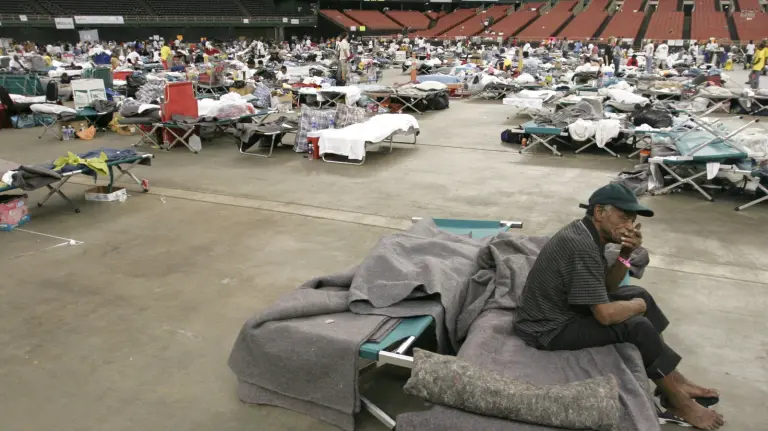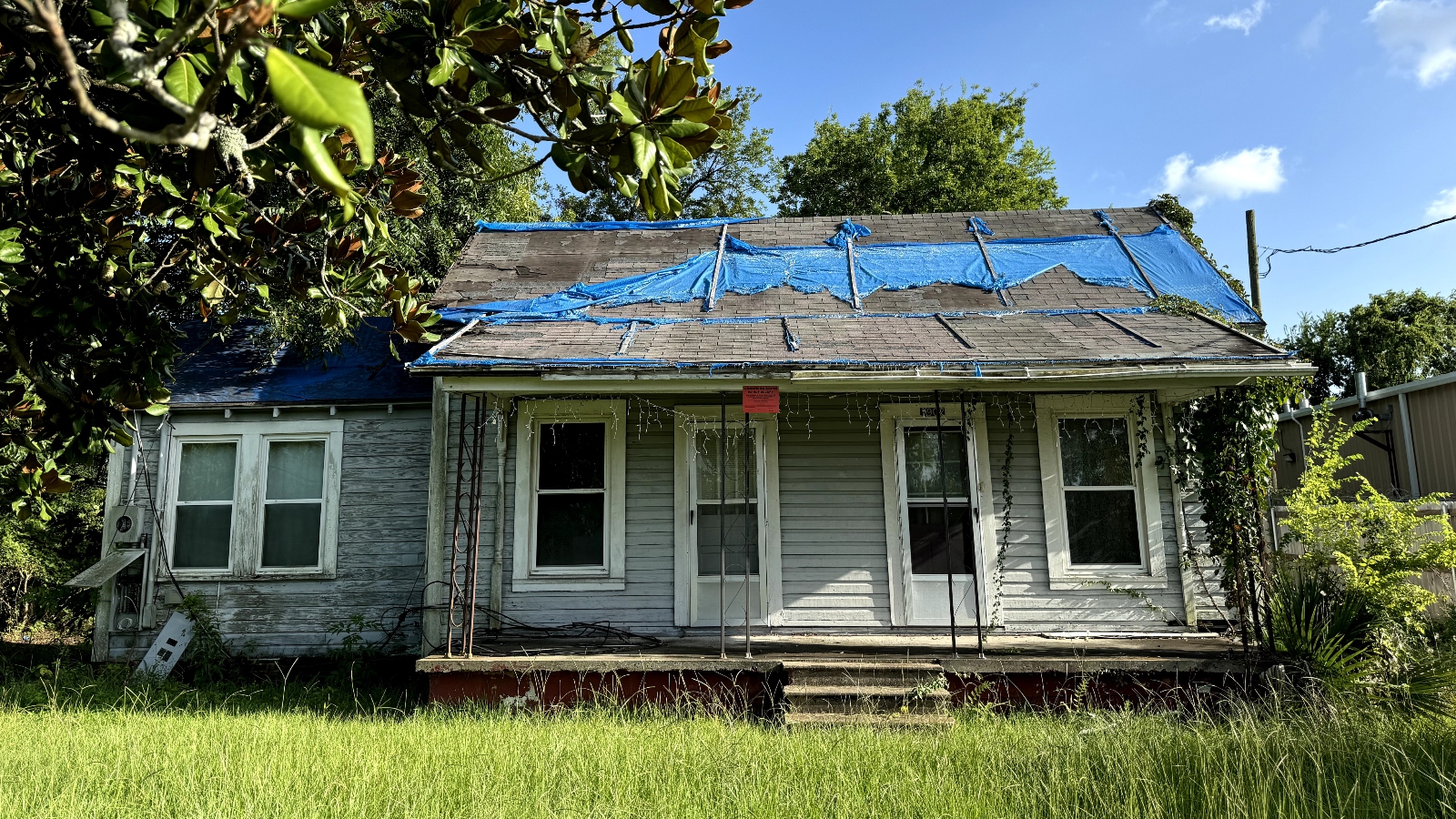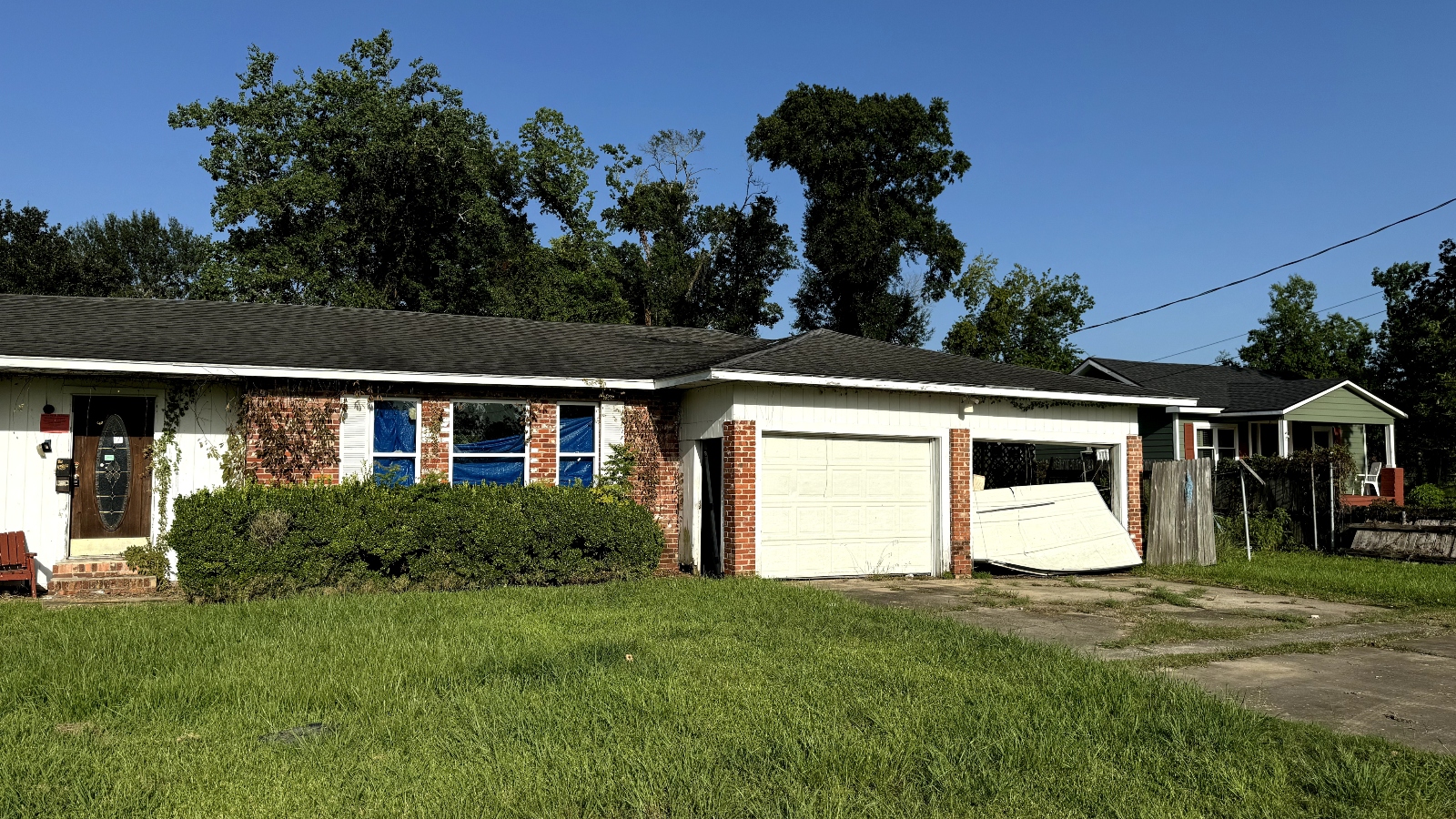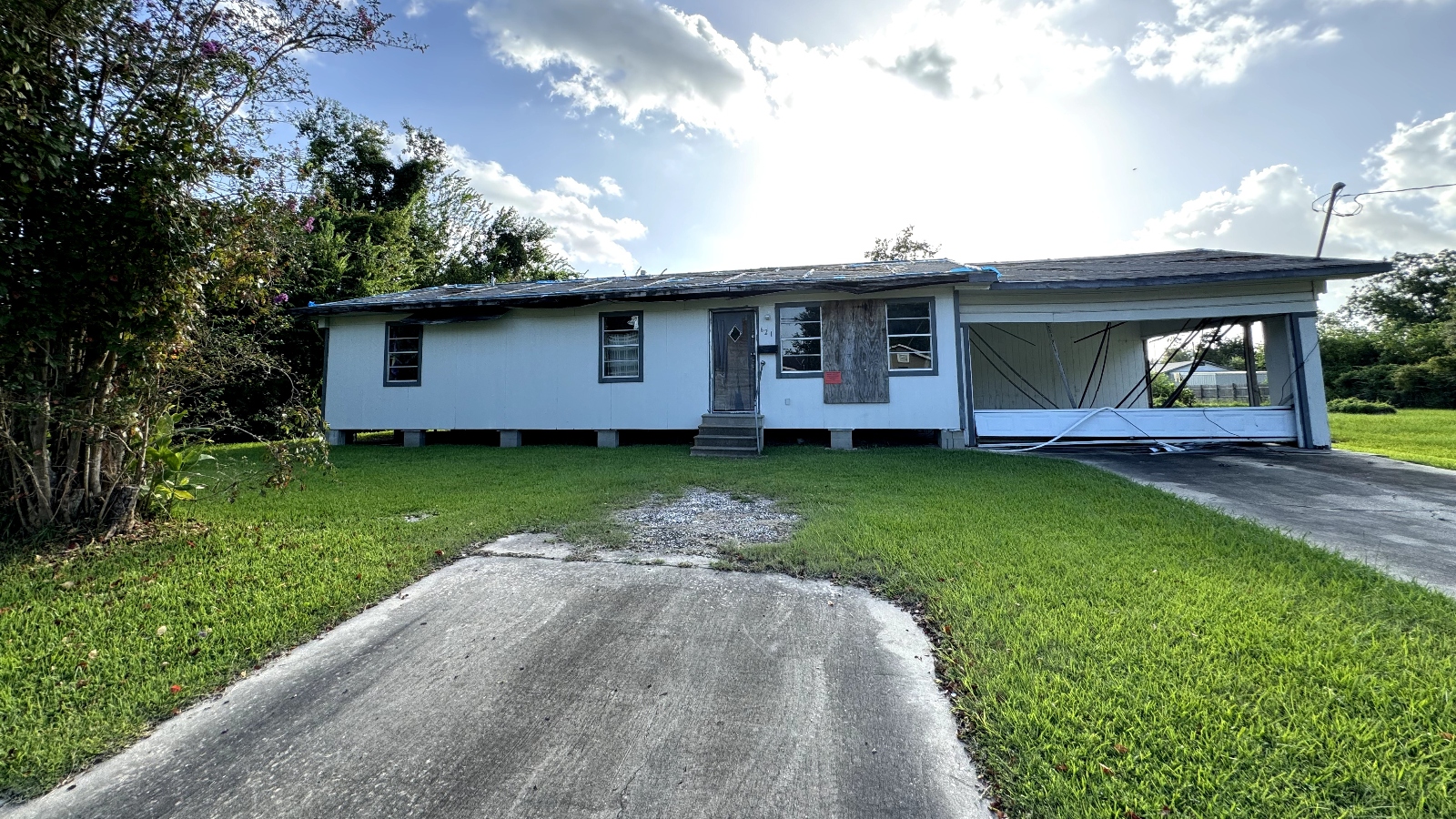It’s been four years since Hurricane Laura slammed into southwest Louisiana just shy of Category 5 status. It was the fiercest storm the state had seen in a century, driving more than 10 feet of storm surge onto land. Six weeks later, Hurricane Delta, a Category 2, carved a near-identical gash through the Bayou State, seeming to sense the path of least resistance Laura left behind. That winter, a deadly freeze gripped the ravaged region. Pipes burst and pavement froze into deadly ice slicks as temperatures dropped into the teens. A few months later, spring floods dropped a foot and a half of rain on Lake Charles, the city that had already endured, at that point, three epochal disasters. One journalist dubbed it the “most unfortunate city in the United States.”
At a meeting this July, the Calcasieu Parish Police Jury, the administrative and legislative body that oversees Lake Charles and the rest of Louisiana’s Calcasieu Parish (pronounced cal-kuh-shoo), seemed eager to shake that reputation. Hundreds of millions of federal disaster aid dollars have poured into the parish, much of them aimed at Lake Charles. The number of tarps covering rooftops — the blue dots that came to define the region after the back-to-back storms — has dwindled. The parish’s income is now exceeding expenses thanks in part to an uptick in sales tax revenue — a sign of economic recovery.
The sentiment was codified in an assessment, presented at the July meeting, called the Annual Comprehensive Financial Report. It noted that “there is excitement among our leaders to make great strides in areas that do not involve hurricane recovery.” Minutes later, the jurors approved the use of the parish courthouse grounds for a food and music festival that its organizer promised would be the “go-to festival for the month of November for the state and the region.” The jurors were buoyant. Calcasieu Parish, and Lake Charles, was finally on the up-and-up.

AFP via Getty Images
But while Lake Charles makes progress recovering from the storms’ physical and economic damages, the city is still grappling with another legacy the storms left behind — one that’s quietly undermining its long-term recovery.
Officials estimate that Lake Charles permanently lost close to 7 percent of its population, more than 5,000 people, in the wake of the storms, though city planners note that the real number is likely even higher. Between 2019 and 2020, the Lake Charles area lost a higher share of its population than any other city in the U.S., a pattern of out-migration sparked by the COVID-19 pandemic and severely exacerbated by Laura and Delta.
People left for bigger urban areas like Houston and New Orleans, where housing could be found. Some had been relative newcomers to Lake Charles who had rented apartments and houses; roughly half of the city’s affordable housing stock was damaged. Others were from families who had called Lake Charles home for generations. Those who remained did so for one of two reasons: They could afford to stay, or they couldn’t afford to leave.
But Louisiana doesn’t have a uniform or an effective way of tracking and compensating for that movement — no state in the country does. And that has long-lasting political implications for both the people who leave and those who stay. When a city loses people, it doesn’t just lose some of the social fabric that imbues a place with feeling. Where people end up dictates district lines, congressional representation, and how state and federal resources are distributed.
Lake Charles is now gaining back some of the population it lost, but the influx isn’t following historical patterns: Many of the people who have moved in or returned home are settling into wealthier and, overall, whiter parts of Lake Charles — areas that recovered more quickly from the devastation. Meanwhile, in some of the city’s majority-Black neighborhoods in northern Lake Charles, the recovery process has been painfully slow.
A few of the many abandoned and condemned homes in Lake Charles. Zoya Teirstein / Grist
The U.S. relies on the decennial census to take stock of exactly how many people live where. Come hell or high water, its once-in-a-decade population assessment dictates how district lines are drawn. But in Lake Charles, the timing of the first two storms, which hit as the census was closing down its field offices, immediately invalidated information painstakingly gathered by census officers. Census officials were still trying to track down people displaced by Laura when Delta hit. The city now stands as an example of what happens when the census fails to capture the population-level impacts of natural disasters. How can cities account for storms that hollow out a generation of working-class families?
Lake Charles is one of many cities across the country being forced to confront these questions. Up until now, however, the invisible population trend lines being etched into the city have been a lot easier to ignore than scarred rooftops and abandoned buildings.
Edward Gallien Jr., 67, lives with his pit bull, Red, on Pear Street in northern Lake Charles. His house is less than 4 miles away from the county government office where the Calcasieu Parish Police Jury meets, but Gallien hasn’t experienced the recovery the jurors are keen to celebrate. His roof is caving in, frayed scraps of a blue plastic tarp barely covering the sagging asphalt shingles. Smashed windows let in putrid-hot summer air and mosquitos breed in the fast-food containers idling in the sink.
Other houses on his street bear a tell-tale red tag, meaning they’ve been abandoned and marked for demolition by the city. Gallien, who inherited his property from his parents, is still holding out hope that help will come so he can rebuild. He informally inherited his house, a practice permitted under Louisiana state law that can make it exceedingly difficult for property owners to claim federal relief dollars after a disaster hits.
“I’m not giving up,” he said. “I ain’t got nowhere else to go.”

Gallien’s house, severely damaged by Hurricane Laura, is one of the most visible reminders of the legacy of hurricane recovery in Lake Charles. Pictures of homes like his were in every post-hurricane story written about the city. The fact that dilapidated houses still exist haunts city and parish officials, but they’re quickly explained away as relics of a bleaker time. The federal hurricane relief money dried up, parish officials note; the city is moving as fast as it can, Lake Charles city councilmembers say. There’s plenty of blame to go around, too: The city says the parish government should be footing the bill; the parish thinks the opposite.
“It’s not quite recovered to where we need to be,” a parish spokesperson told Grist, a sentiment echoed by many other local representatives. “But it’s a lot closer than it was.”
Driving around Lake Charles, for-rent and for-sale signs dot hundreds of front yards, subtle evidence that the storms’ impacts linger on. Stalled-out apartment complexes, funded by hurricane relief aid and federal infrastructure funds, sit half built. “Coming soon!” signs adorn new buildings that locals say have been “coming soon” for the better part of a year. The tallest skyscraper in Lake Charles, the Capital One Tower on Lakeshore Drive, badly damaged by the hurricanes, is set to be demolished this week.
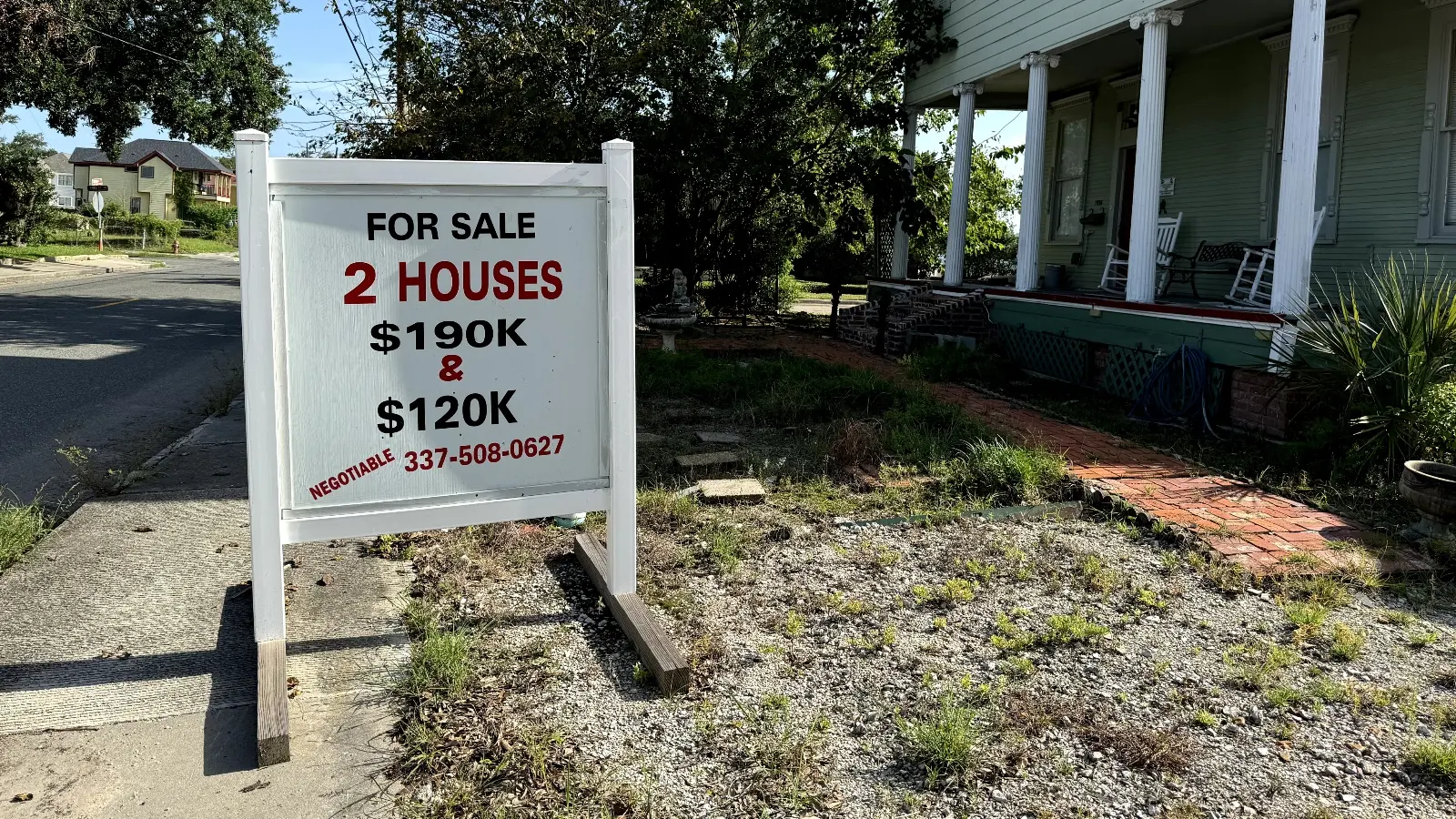
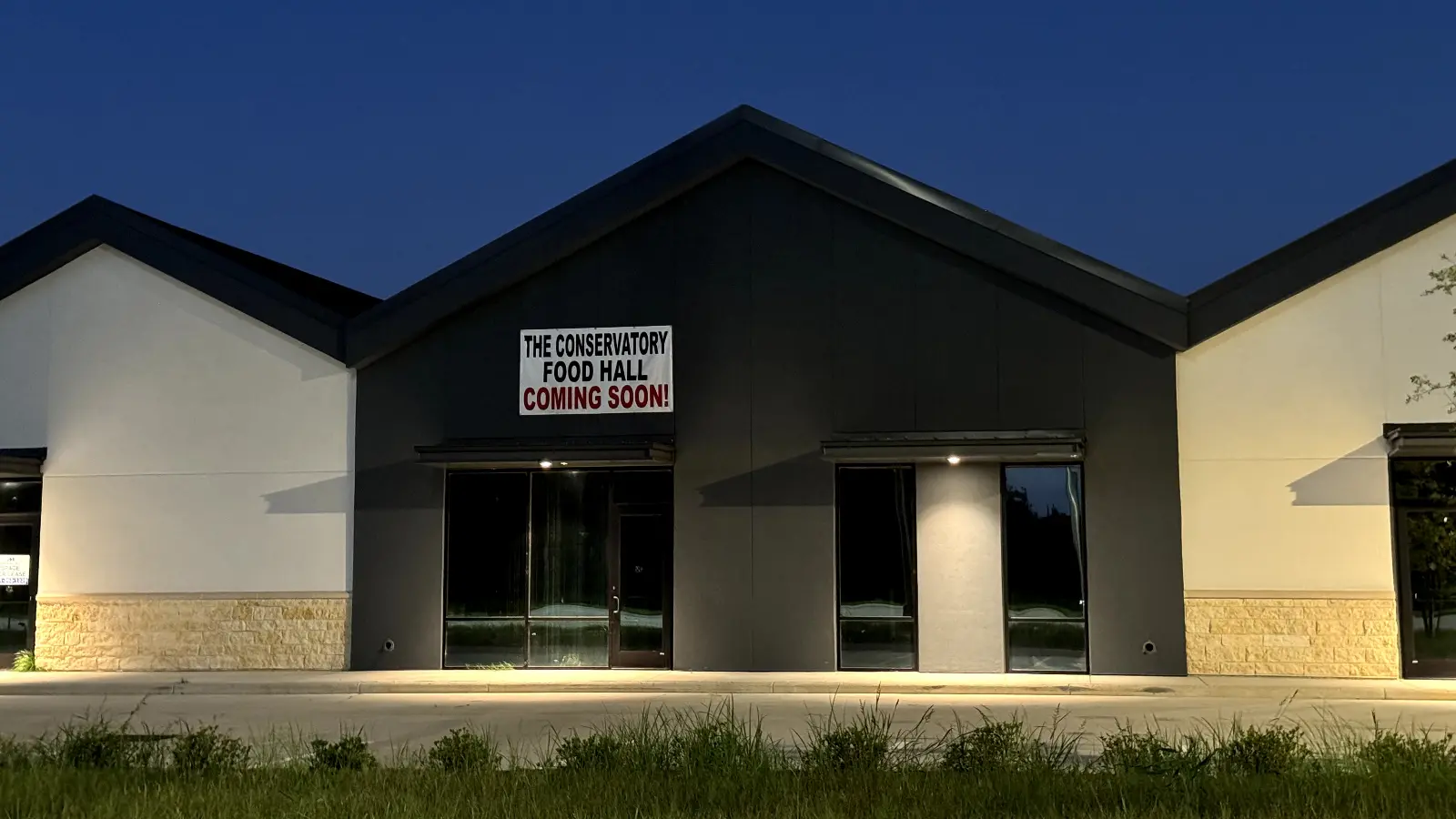
Tasha Guidry, a community organizer and life coach who grew up in Lake Charles and currently lives in the central part of the city, pointed out a new apartment complex on a recent drive from the northern end of the city to its southernmost tip. A handful of cars sat in their respective parking spots in the complex; the rest were empty. “I don’t know how they figure people are coming back here,” she said. “There’s nothing to come back to.”
The United States Census collects demographic, economic, and geographic data about U.S. residents every 10 years, and conducts a community survey update every five years. The census conducted its latest survey in 2020, and was still collecting data when Laura and Delta hit Calcasieu Parish. The survey had already been marred both by the onset of the COVID-19 pandemic and statements made by former president Donald Trump about the aim of the census, which experts believe further dampened collection efforts.
Louisiana ended up having one of the lowest self-response rates to the census in the country, and Calcasieu Parish had one of the highest rates of incomplete surveys.
Every state in the country uses census data to assess the distribution and racial and economic equity of its populations. Once the latest numbers are published, states have a certain amount of time to rejigger their districts in order to remain compliant with federal voting rights regulations — meaning the census plays an integral role in determining how communities are represented in government. The data and redistricting determines how many seats each state gets in the U.S. House of Representatives, how political districts are drawn, and where trillions of dollars for federal programs are distributed.
In the wake of the hurricanes, the 2020 census triggered a massive redistricting effort in Lake Charles — the school board, the city council, and Calcasieu Parish itself. “We’ve been redistricted to hell,” Guidry said, noting the sheer volume of redistricting processes triggered by the census within Lake Charles and the parish.
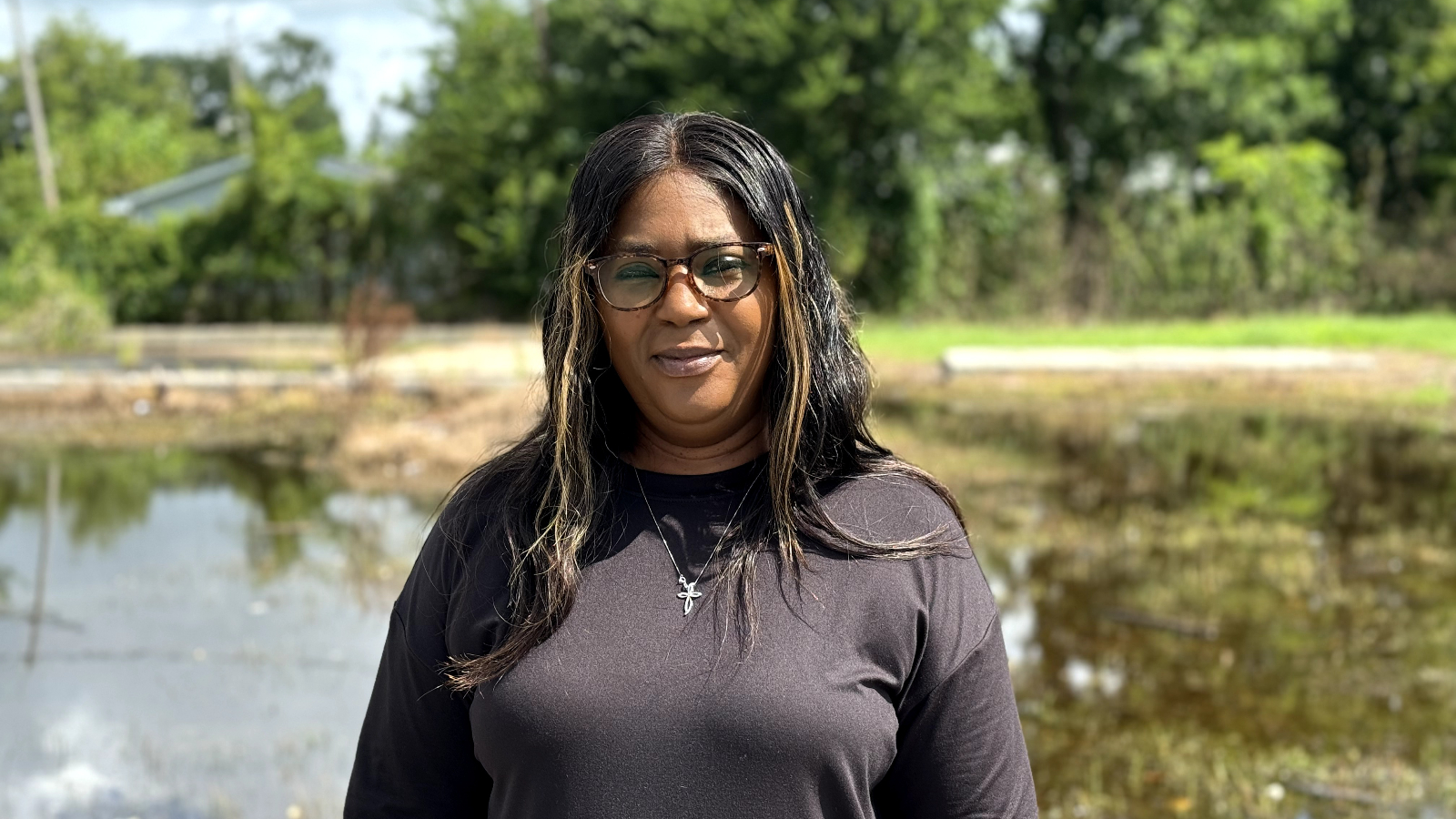
The flow of people out of Lake Charles to other cities in Louisiana or Texas further deepened long-standing racial and economic divides, both at the parish and city levels. “The majority of homeowners were able to come back and rebuild,” said Mike Smith, a member of the Calcaiseu Parish Police Jury who represents District 2, encompassing north Lake Charles. But many renters didn’t come back — at least not immediately. And when they did, they couldn’t find places to live in their old neighborhoods. “Our biggest concern now is housing,” Smith said. Roughly half of the city’s residents lived in rented houses before the storm.
The census didn’t capture these trends, and, in many cases, neither do the new district maps.
On the city council, Craig Marks, a Democrat who represents District F in the southern portion of Lake Charles, says he has observed a mini, hyper-localized migration taking place: Hundreds of renters have left the worst-damaged neighborhoods and moved into new areas of Lake Charles, including into his own.
Marks’ District F went from being 51 percent people of color to roughly 66 percent after the latest census round. The shift is significant because for more than a decade, there have been three majority white districts in Lake Charles and three minority ones, with Marks’ district comprising the seventh, a swing seat. “You would pretty much always have a white person in the fourth seat, so the majority would always be 4-3 white,” said Marks, “and that affects how the city is run.” Minority populations, Black people specifically, have been severely underrepresented, often by design, in the Louisiana state Legislature — Louisiana’s parishes and city councils, also prone to gerrymandering, mirror this inequity.
But what looks like progress in Marks’ district might not end up being as good as it seems. Marks estimates that roughly a third of his constituents are relatively new renters, and some portion of them either don’t vote or haven’t updated their addresses, voting instead in the districts they lived in before Laura and Delta. “The numbers can be deceptive,” he said. Marks is up for reelection next year, and he doesn’t yet know what the long-term impact of population displacement in his district will be. “It makes it harder now, because you’re trying to get people on your team who really don’t have a vested interest in your district,” he said. “When they get straight, they’re going to be in other districts where their homes originally were.”
What Marks is contending with in Lake Charles is a microcosm of larger disaster-driven trends unfolding across the rest of the U.S., particularly in regions prone to large-scale disruptions like hurricanes and wildfires that displace thousands of people in one fell swoop. Each disaster creates ripples of movement in and out. When multiple cataclysmic disasters strike one region in quick succession, climate change-driven phenomena called “compounding events,” they create overlapping ripples of displacement, making the movement that much harder to track. If it was tracked in real time, local officials would see disturbing trends.
After Hurricane Katrina in 2005, for example, New Orleans knocked down much of its affordable housing, damaged during the hurricane, deeming it a safety hazard. The new buildings that went up were more expensive, and the new construction very quickly gentrified neighborhoods, forcing even more people out in a second, extended wave of displacement. “New Orleans absolutely became a city that was whiter and wealthier than it was beforehand,” said Daniel Aldrich, a professor of political science at Northeastern University. But it was difficult to capture those changes as they were happening, Aldrich said, because the initial population shifts occurred so quickly and because many of the people who left the city were renters.
“There’s no way the census, every 10 years, will be able to manage keeping up with the rapid population shifts that are already happening,” Aldrich, who switched his research focus to disasters and resilience when his own home was destroyed by Katrina, said.
After big hurricanes, cities have every incentive to apply for federal relief money and spend it on fixing what’s visibly broken. But calculating population loss, and adjusting district lines to compensate for it, is far less common. States, districts, and cities can conduct their own analyses to determine whether their population makeup has changed, but such analyses are expensive and time-consuming. Following a disaster, local officials have to decide how to allocate whatever limited resources they have, and conducting door-knocking campaigns or tracking mail-forwarding notices to follow displaced people is low on the list of priorities.
In 2022, the U.S. Census Bureau started incorporating disaster displacement into its weekly “household pulse” surveys — the agency’s smaller, near-real-time assessments of major issues facing the population. There is no law requiring cities and states to use this data to assess population loss. “We collect these data for governments to use in a way that best serves their needs,” a Census spokesperson told Grist.
There’s a financial and political incentive for districts not to update their population numbers following a major disaster, especially if officials in those districts suspect they may have lost many of their residents. The more population you have, the more money you get from your state and the federal government. “If you’re a local administrator and you know the next census is going to record a drop in population, meaning you’re going to lose resources, that’s the last thing you want to accelerate,” said Aldrich. “You want to leave that number hanging until the last possible moment to hold on to whatever federal and state funds that are coming because of the old numbers.”
In six months, Lake Charles will hold its first mayoral and city council elections since Laura hit in 2020. Marks isn’t sure how he will fare. He doesn’t even know how many people he has in his district. What he does know, however, is that more change is coming. When Laura hit and floodwater inundated Lake Charles, it demonstrated exactly which parts of the city were built on high and low ground. North Lake Charles, despite trailing the rest of the city in recovery, sits on some of the highest real estate around, while the southern edge of the city, a former swamp, dealt with more flooding during Laura, Delta, and the extreme rains the following spring. “Ironically, the poor part of the city is the higher part of the city,” Marks said. He forecasts another intercity migration soon. “I would predict that in the next 20 years, you’re going to see a drastic change in the makeup of Lake Charles.”
